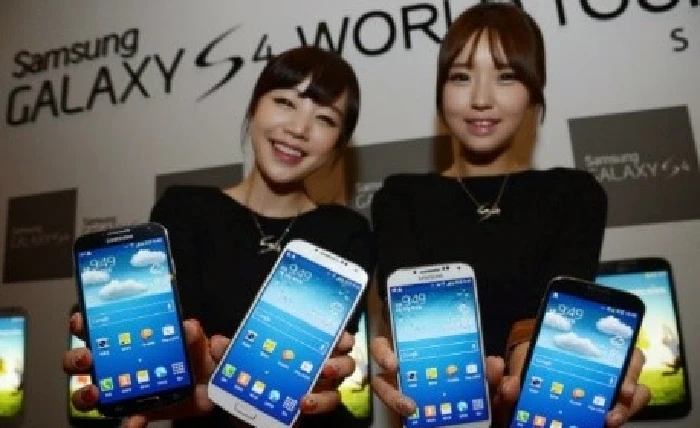 March 23, 2014
March 23, 2014
Just some years ago, Samsung was struggling to catch up in the electrical and electronic market, correct me if wrong. But now, the company makes more of them than anybody else in smart phone segment, more importantly, it has Apple at its back. Samsung is indeed leading the global market with its cutting edge global strategy, it works well internally, externally and globally.
According to Samsung Sustainability Report 2013, Samsung sold more than 406 mobile phones (both mobile phone and smart phone segment) in 2012, securing a position as the global market leader with an overall share of 23.4%. In sum, Samsung achieved the #1 position in key product areas including smart phones, mobile phones, TVs, LCD monitors, LED monitors and semiconductors–memory.
Wondering how Samsung made it? Here are some of the core pillars of Samsung’s overall global strategy.
Organizational Learning
Samsung is way better than anybody else as far as learning is concerned. In fact, Samsung learns extremely fast from its competitors, more importantly, knowledge and insights are shared so-quickly and efficiently … regionally, globally. “A market reader is sort of the classic fast follower,” Barry Jaruzelski explained, a senior partner at Booz&Co and the co-author of the Global Innovation 1000.
Product Technology and Leadership
Although Samsung’s aggressive product strategy has gotten them into deep trouble couple of years ago that they lost a high profile case to Apple for imitating its design. However, Samsung reacted quickly by coming out with a variety of devices. It reacts to what the market responds to, pushes successes further while minimizing failures. And now, Samsung is not providing a cheaper or lesser feature iPhone, but it is differentiated itself with competing features such as larger screens, different features, and successful creative marketing.
The Samsung Note series is a perfect example. Through its market research, Samsung found that Asian-language speakers in particular needed a mobile device that they could do hand-writing on because drawing characters is easier especially with a pen. The result was a combination phone/tablet (“phablet”) that has been an unexpected hit.
Samsung has a lot of innovation of its own, it was second only to IBM in the number of U.S. patents filed last year, and filed 150 patents related to the new technology in the Galaxy S4, according to Samsung’s 57-year-old mobile chief J.K. Shin, in an interview with The Wall StreetJournal.
Marketing Spend
It is no secret that Samsung invests a lot on marketing its products, the total marketing spend is more than the entire market value of other individual Android manufacturers. According to the Korean sources, Samsung took its marketing costs to new heights last year where the company reportedly increased its sales promotion budget by 38.7% from 2012, with 934 billion won (roughly US$889 million) spent on sales promotion during the first three quarters in its home country.
Sales Promotion
Samsung has changed the way it markets products. The company reduced the investments in advertisements from last year’s 1.71 trillion won (US$1.63 billion) to 695 billion won (US$661 million). Samsung’s marketing money was instead spent on its sales promotions such as rebates, discounts and other incentives such as merchant partnerships to grab higher sales compared to just ads.
Creative Advertising
Samsung’s move to focus on product imagery is a departure from the strategy taken just last year to turn to lifestyle marketing methods, in a way to encourage consumers to buy across all tiers of Samsung’s smartphones, tablets, phablets, laptops and cameras.

Samsung S5 is the best example to illustrate this. Samsung’s product messages and awareness have been firmly seeded and raised into the market, the brand will also tackle more lifestyle-led marketing once awareness is built in the public – telling stories about the phone’s features such as its battery life, speed, camera and health and wellness options such as the in-built heart monitor.
According to Ines van Gennip, Samsung’s UK and Ireland Marketing Director, told Marketing Week the brand is taking on an internal philosophy of “people inspired innovation” to help shape the product marketing strategy behind the launch of the Galaxy S5, which will be available to very soon. She added that consumers “will be a bit surprised” by the creative in the forthcoming campaign, the media spend of which is set to equal that of the Galaxy S4, which was reportedly more than $1 billion globally.
Samsung’s marketing activity combined with the strength of the product means the company is confident the Samsung Galaxy S5 will “smash” the 40 million sales mark which Samsung Galaxy S4 achieved last year.
Supply Chain and Distribution
Samsung is so much more than just a smartphone-maker. Samsung is indeed a conglomerate, a manufacturer, and the world’s largest chip-maker. It makes many of the components that go into its smartphones giving it a cost advantage and allowing it to be much more flexible in terms of what it produces.
According to JP Morgan’s data below, it is pretty clear how much Samsung produces on its own. SEC stands for Samsung Electronics Corporation, and SDC for Samsung Display Corporation.


